 Abstract: Early stages of human neural development include neural induction, shaping, folding, and closure of neural tubes. Current understanding of early neural development relies on animal studies. However, insights in human neural development mechanism are very limited, largely due to the inaccessibility of human embryo, lack of in vitro models, and ethical concerns. In this talk, I will first discuss our recent experimental and computational works using a series of microengineered tools to model the neural induction, polarization, and bending of neural tubes. Our results demonstrate that biomechanical cues, in addition to morphogen gradient, also play functional roles during multiple stages of neurulation. Direct measurement of cell shape and contractile forces depicted their important roles in regulating the cell fate decision during neural induction. By dynamically changing the shape of cells using an expandable membrane, we further confirm the possibility to tune the cell fate by solely modulating cell shape. In the second part of the talk, I will discuss how mechanical cues regulate the differentiation of human pluripotent stem cells, including their neural differentiation and anterior-posterior patterning. Together, we provide a novel mechano-chemical model of neural development, which provides novel insights in the biomechanics of embryogenesis and morphogenesis.
Abstract: Early stages of human neural development include neural induction, shaping, folding, and closure of neural tubes. Current understanding of early neural development relies on animal studies. However, insights in human neural development mechanism are very limited, largely due to the inaccessibility of human embryo, lack of in vitro models, and ethical concerns. In this talk, I will first discuss our recent experimental and computational works using a series of microengineered tools to model the neural induction, polarization, and bending of neural tubes. Our results demonstrate that biomechanical cues, in addition to morphogen gradient, also play functional roles during multiple stages of neurulation. Direct measurement of cell shape and contractile forces depicted their important roles in regulating the cell fate decision during neural induction. By dynamically changing the shape of cells using an expandable membrane, we further confirm the possibility to tune the cell fate by solely modulating cell shape. In the second part of the talk, I will discuss how mechanical cues regulate the differentiation of human pluripotent stem cells, including their neural differentiation and anterior-posterior patterning. Together, we provide a novel mechano-chemical model of neural development, which provides novel insights in the biomechanics of embryogenesis and morphogenesis.
Biographical Sketch: Yubing Sun is an assistant professor for the Department of Mechanical and Industrial Engineering at the University of Massachusetts, Amherst. He is also a faculty member of Molecular & Cellular Biology Graduate Program and Institute for Applied Life Sciences at UMass. He received his Ph.D. degree from the Department of Mechanical Engineering at the University of Michigan, Ann Arbor in 2015, and his B.S. degree in Materials Science and Engineering from the University of Science and Technology of China. His Ph.D. work with Professor Jianping Fu established the Hippo/YAP-dependent mechanosensitivity of human pluripotent stem cells. His current research interests include mechanotransduction, stem cell biology, microfabrication, developmental biomechanics, lab-on-chip, biosensing, and ultrasound technologies.
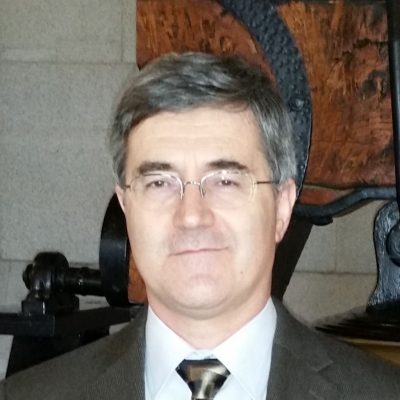 Dr. George Lykotrafitis and his student Kostyantyn Partola have been featured for their development of a device that tests blood viscosity – an important indicator of heart health. Kostyantyn has had support from the Accelerate UConn program as well as the Connecticut Center for Entrepreneurship and Innovation Fellowship program to support the commercialization of the technology. More information on their work can be found at UConn Today:
Dr. George Lykotrafitis and his student Kostyantyn Partola have been featured for their development of a device that tests blood viscosity – an important indicator of heart health. Kostyantyn has had support from the Accelerate UConn program as well as the Connecticut Center for Entrepreneurship and Innovation Fellowship program to support the commercialization of the technology. More information on their work can be found at UConn Today: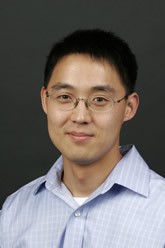
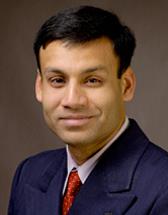 Abstract: Blood clots are required to stem bleeding and are subject to a variety of stresses, but they can also block blood vessels and cause heart attacks and strokes. We measured the compressive response of human platelet-poor plasma (PPP) clots, platelet-rich plasma (PRP) clots and whole blood clots and correlated these measurements with confocal and scanning electron microscopy to track changes in clot structure. Stress-strain curves revealed four characteristic regions, for compression-decompression: 1) linear elastic region; 2) upper plateau or softening region; 3) non-linear elastic region or re-stretching of the network; 4) lower plateau in which dissociation of some newly made connections occurs. Our experiments revealed that compression proceeds by the passage of a phase boundary through the clot separating rarefied and densified phases. This observation motivates a model of fibrin mechanics based on the continuum theory of phase transitions, which accounts for the pre-stress caused by platelets, the adhesion of fibrin fibers in the densified phase, the compression of red blood cells (RBCs), and the pumping of liquids through the clot during compression/decompression. Our experiments and theory provide insights into the mechanical behavior of blood clots that could have implications clinically and in the design of fibrin-based biomaterials. As a second topic we will consider thermal fluctuations of lipid bilayer membranes. Typically, membrane fluctuations are analyzed by decomposing into normal modes or by molecular simulations. We propose a new approach to calculate the partition function of a membrane. We view the membrane as a fluctuating elastic plate and discretize it into triangular elements. We express its energy as a function of nodal displacements, and then compute the partition function and covariance matrix using Gaussian integrals. We recover well-known results for the dependence of the projected area of the membrane on the applied tension and recent simulation results on the dependence of membrane free energy on geometry, spontaneous curvature and tension. As new applications, we compute elastic and entropic interactions of inclusions in membranes.
Abstract: Blood clots are required to stem bleeding and are subject to a variety of stresses, but they can also block blood vessels and cause heart attacks and strokes. We measured the compressive response of human platelet-poor plasma (PPP) clots, platelet-rich plasma (PRP) clots and whole blood clots and correlated these measurements with confocal and scanning electron microscopy to track changes in clot structure. Stress-strain curves revealed four characteristic regions, for compression-decompression: 1) linear elastic region; 2) upper plateau or softening region; 3) non-linear elastic region or re-stretching of the network; 4) lower plateau in which dissociation of some newly made connections occurs. Our experiments revealed that compression proceeds by the passage of a phase boundary through the clot separating rarefied and densified phases. This observation motivates a model of fibrin mechanics based on the continuum theory of phase transitions, which accounts for the pre-stress caused by platelets, the adhesion of fibrin fibers in the densified phase, the compression of red blood cells (RBCs), and the pumping of liquids through the clot during compression/decompression. Our experiments and theory provide insights into the mechanical behavior of blood clots that could have implications clinically and in the design of fibrin-based biomaterials. As a second topic we will consider thermal fluctuations of lipid bilayer membranes. Typically, membrane fluctuations are analyzed by decomposing into normal modes or by molecular simulations. We propose a new approach to calculate the partition function of a membrane. We view the membrane as a fluctuating elastic plate and discretize it into triangular elements. We express its energy as a function of nodal displacements, and then compute the partition function and covariance matrix using Gaussian integrals. We recover well-known results for the dependence of the projected area of the membrane on the applied tension and recent simulation results on the dependence of membrane free energy on geometry, spontaneous curvature and tension. As new applications, we compute elastic and entropic interactions of inclusions in membranes.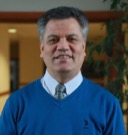 Abstract: Multiphase flows are ubiquitous in a wide range of natural processes and engineering applications. Although efforts to compute multiphase flows started as early as the beginning of the computational fluid dynamics (CFD), the progress was rather slow mainly due to the existence of interfaces that continuously evolve in time and often undergo large deformations leading to topological changes such as breakup and coalescence. In the case of confinement, the fluid-fluid interface strongly interacts with the complex channel wall and usually involve small features such as thin liquid films that are difficult to resolve computationally. Multi-physics effects such as soluble surfactant, phase change, chemical reactions, moving contact line and viscoelasticity make the problem even more complicated and challenging for computational simulations. In this talk, I will discuss our work towards addressing these challenges. I will first describe a front-tracking method developed for particle-resolved simulations of multiphase flows, where all relevant continuum length and time scales are fully resolved in all phases. Special emphasis will be placed on treatment of soluble surfactants, viscoelasticity and phase change (droplet evaporation and burning). Sample results will be presented for various multiphase flows encountered or inspired by bio/microfluidic applications. The microfluidic applications generally involve highly laminar low Reynolds number flows but the numerical method is not restricted to low Reynolds numbers and can be directly applied to turbulent multiphase flows at moderate and even high Reynolds numbers depending on available computational resources. Sample results will also be presented about effects of soluble surfactant on weakly turbulent bubbly flows at moderate Reynolds numbers. The talk will conclude with future directions and applications of presented method to large multi-scale and multi-physics problems of practical interest.
Abstract: Multiphase flows are ubiquitous in a wide range of natural processes and engineering applications. Although efforts to compute multiphase flows started as early as the beginning of the computational fluid dynamics (CFD), the progress was rather slow mainly due to the existence of interfaces that continuously evolve in time and often undergo large deformations leading to topological changes such as breakup and coalescence. In the case of confinement, the fluid-fluid interface strongly interacts with the complex channel wall and usually involve small features such as thin liquid films that are difficult to resolve computationally. Multi-physics effects such as soluble surfactant, phase change, chemical reactions, moving contact line and viscoelasticity make the problem even more complicated and challenging for computational simulations. In this talk, I will discuss our work towards addressing these challenges. I will first describe a front-tracking method developed for particle-resolved simulations of multiphase flows, where all relevant continuum length and time scales are fully resolved in all phases. Special emphasis will be placed on treatment of soluble surfactants, viscoelasticity and phase change (droplet evaporation and burning). Sample results will be presented for various multiphase flows encountered or inspired by bio/microfluidic applications. The microfluidic applications generally involve highly laminar low Reynolds number flows but the numerical method is not restricted to low Reynolds numbers and can be directly applied to turbulent multiphase flows at moderate and even high Reynolds numbers depending on available computational resources. Sample results will also be presented about effects of soluble surfactant on weakly turbulent bubbly flows at moderate Reynolds numbers. The talk will conclude with future directions and applications of presented method to large multi-scale and multi-physics problems of practical interest.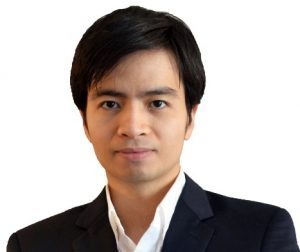

 Stephany Santos Wins Ford Fellowship.Stephany Santos, a doctoral candidate in the imLab, and advised by Prof. David Pierce, recently won a prestigious Ford Foundation Fellowship from the National Academies of Sciences, Engineering, and Medicine.
Stephany Santos Wins Ford Fellowship.Stephany Santos, a doctoral candidate in the imLab, and advised by Prof. David Pierce, recently won a prestigious Ford Foundation Fellowship from the National Academies of Sciences, Engineering, and Medicine.